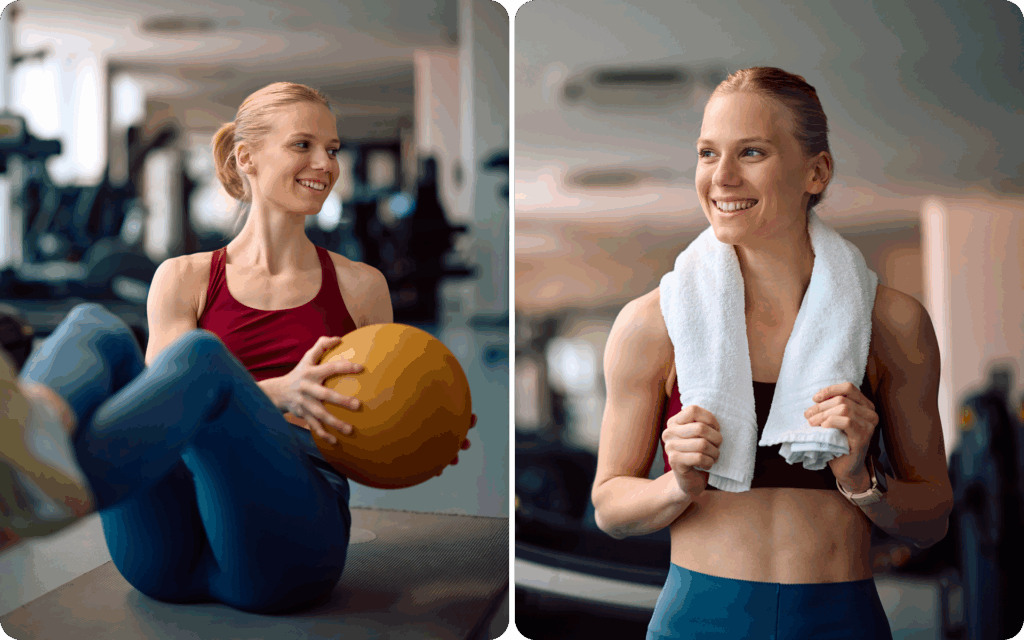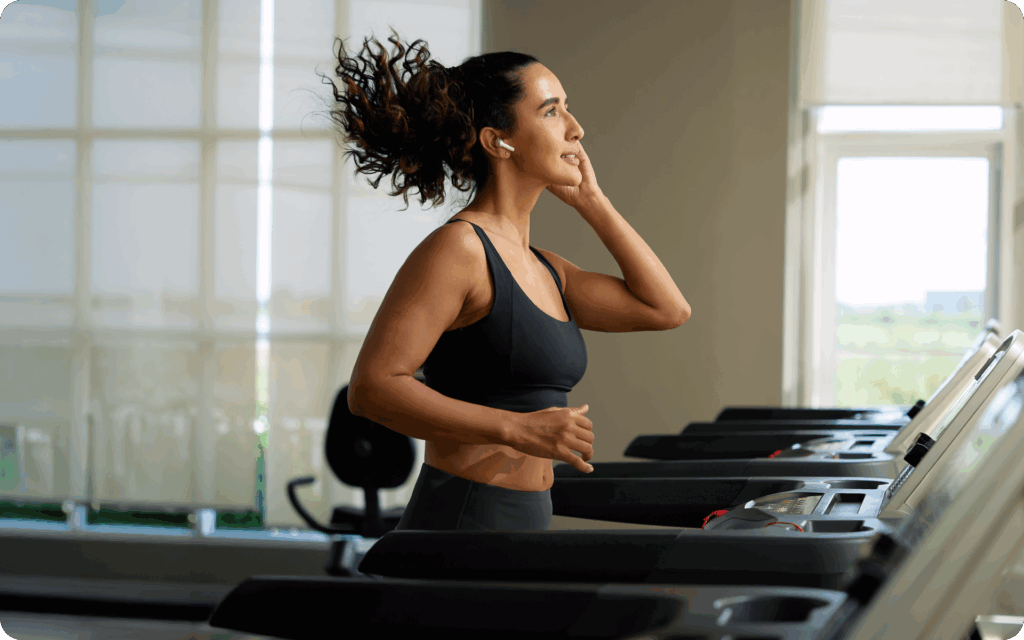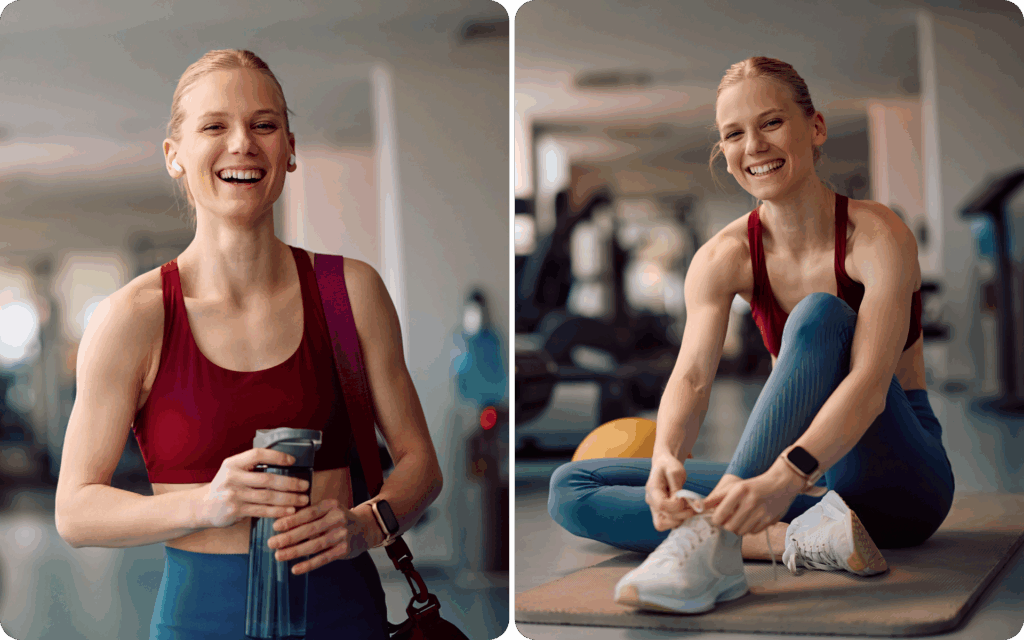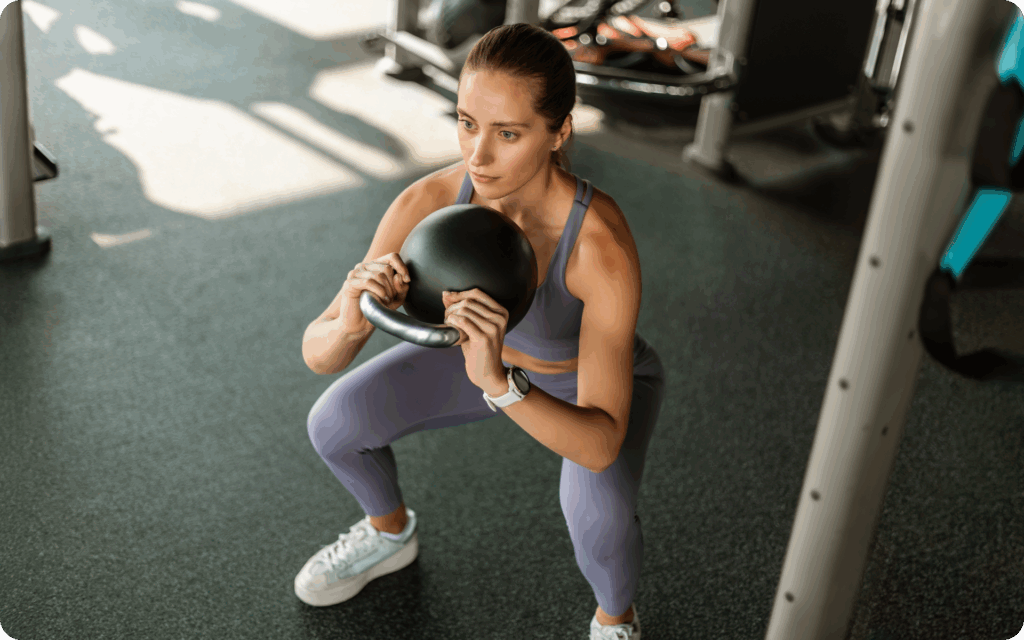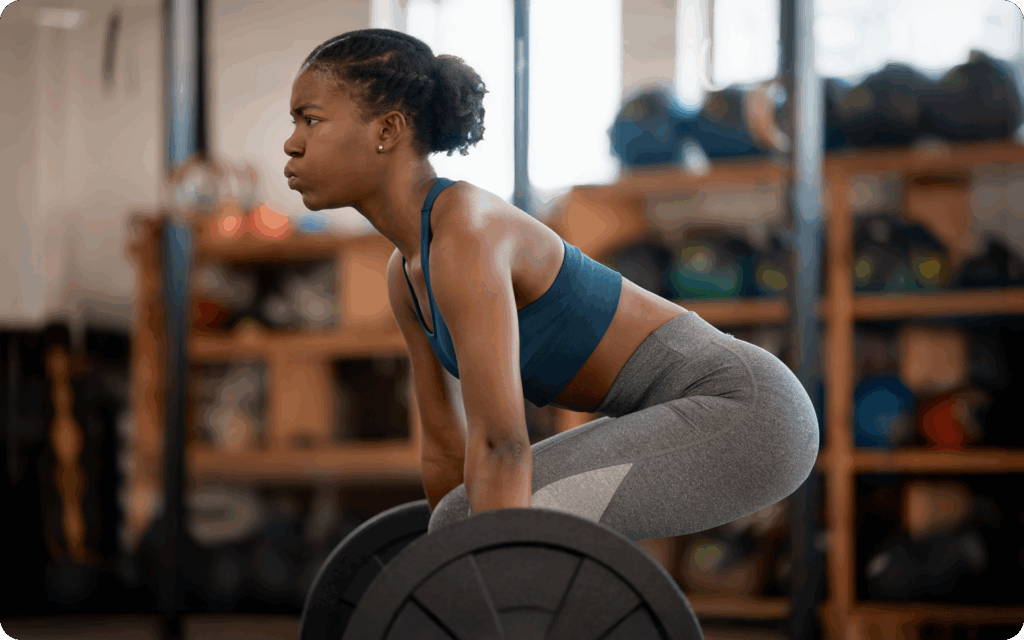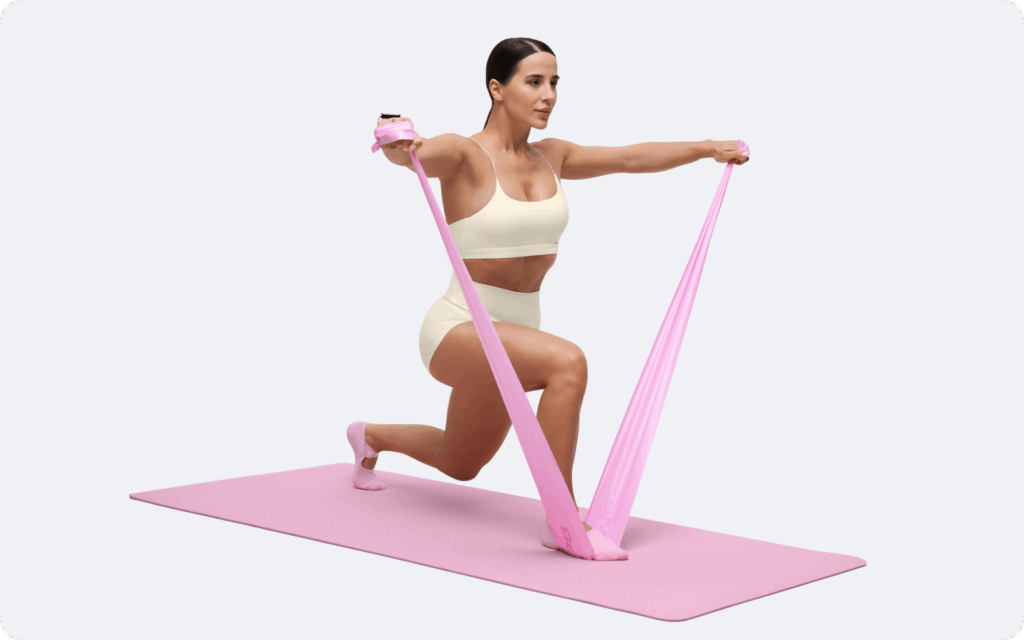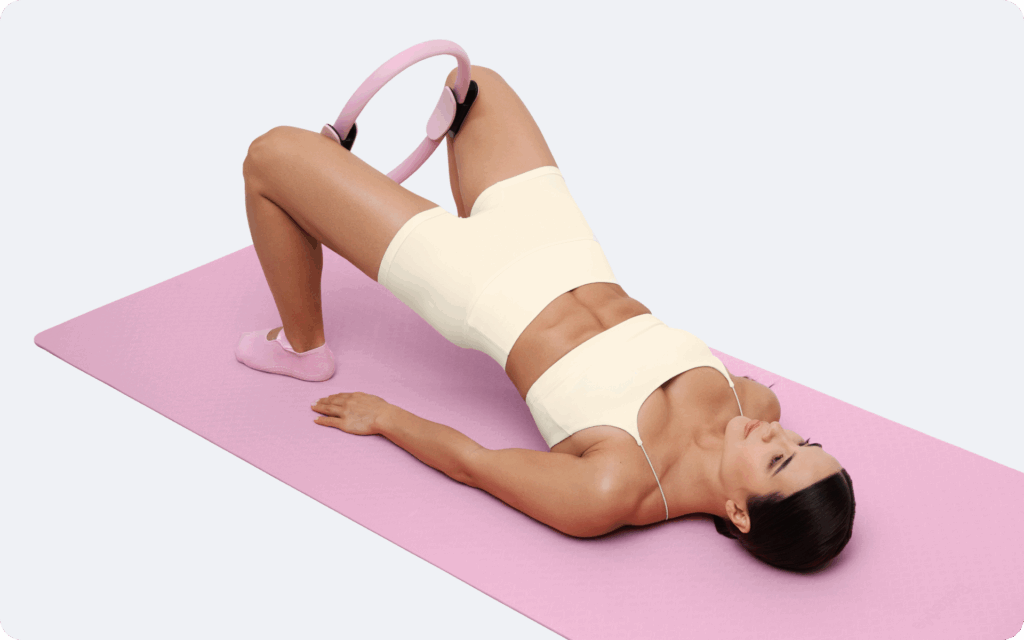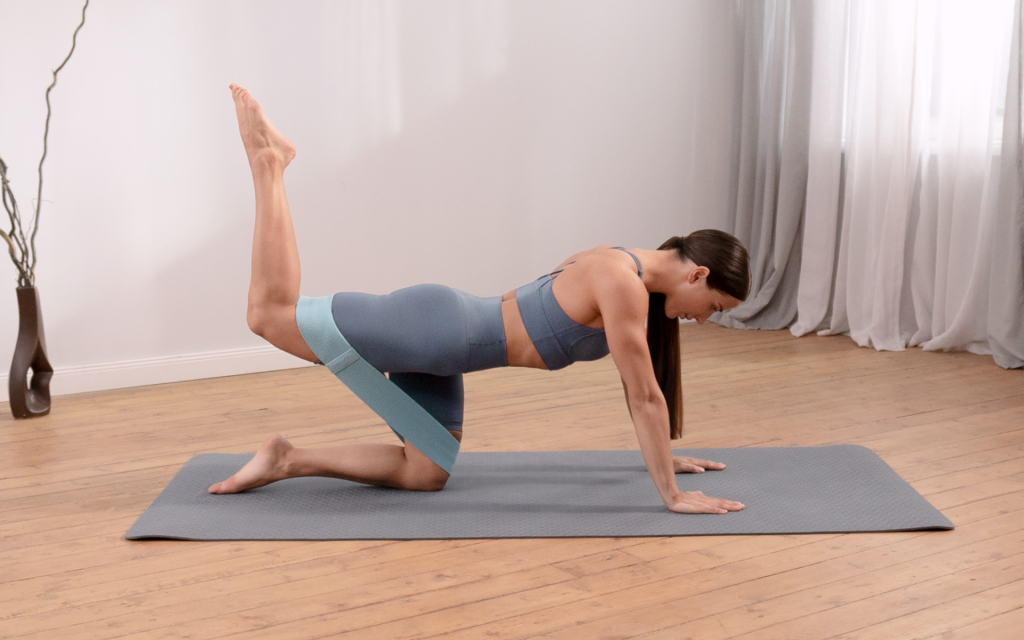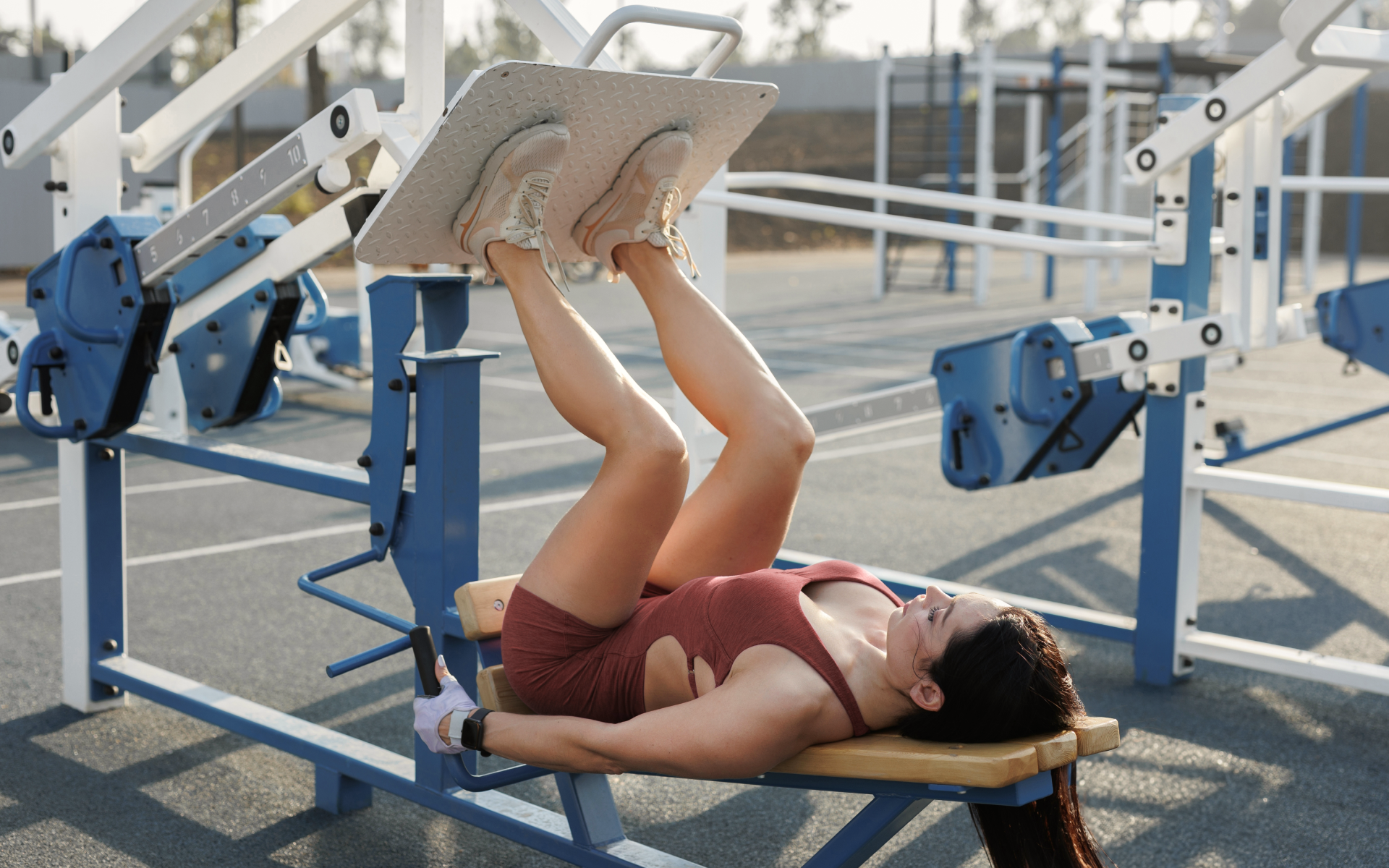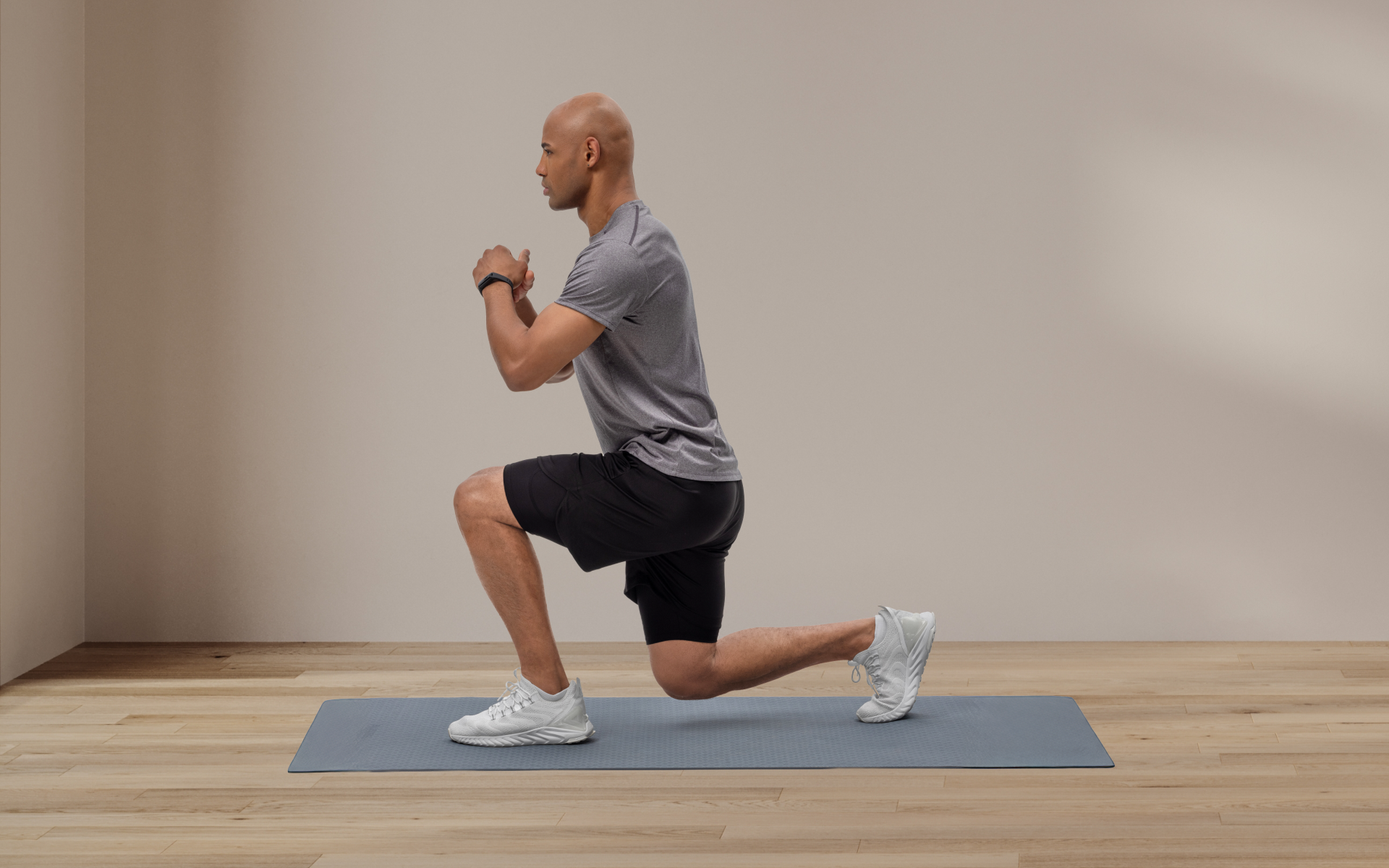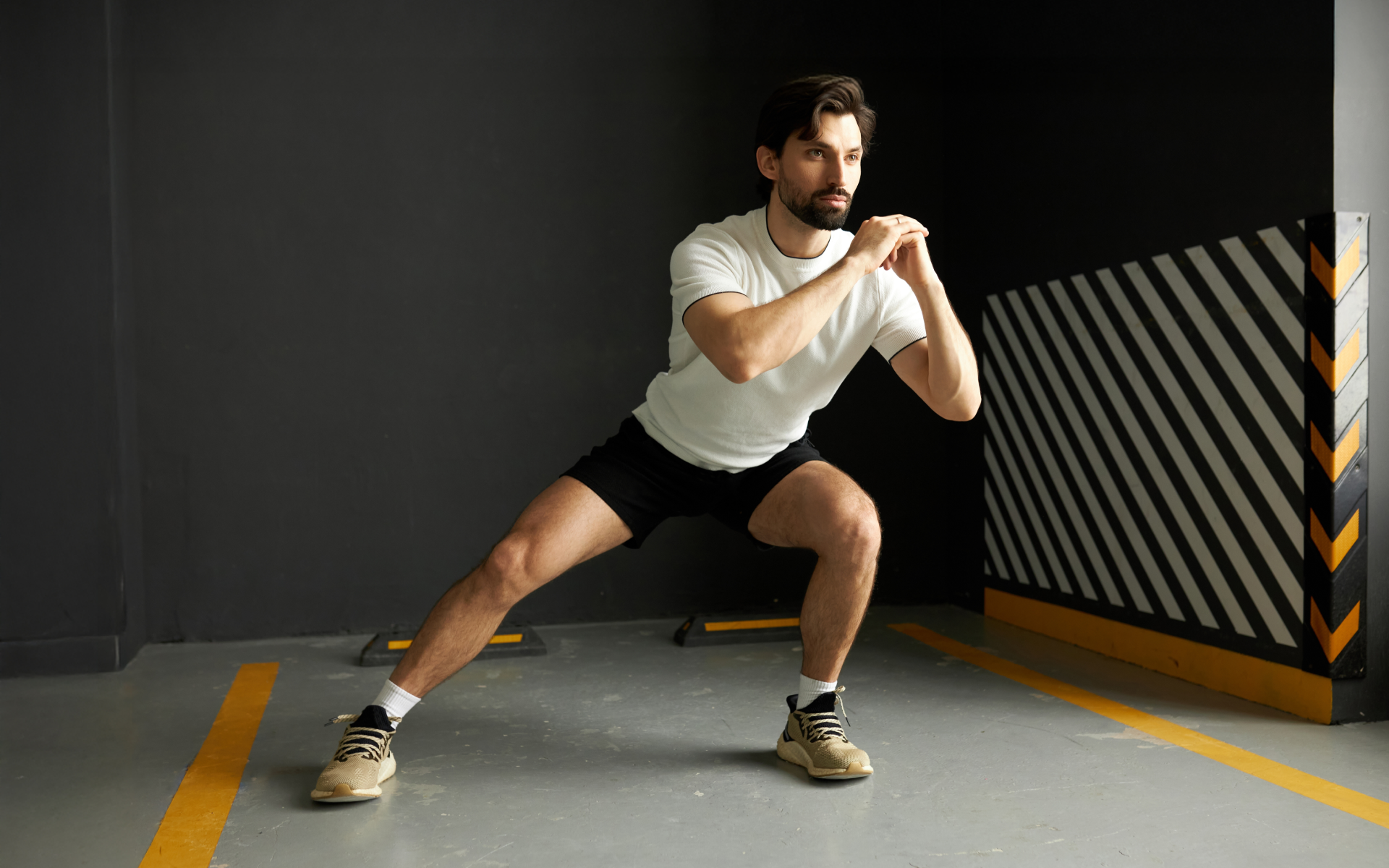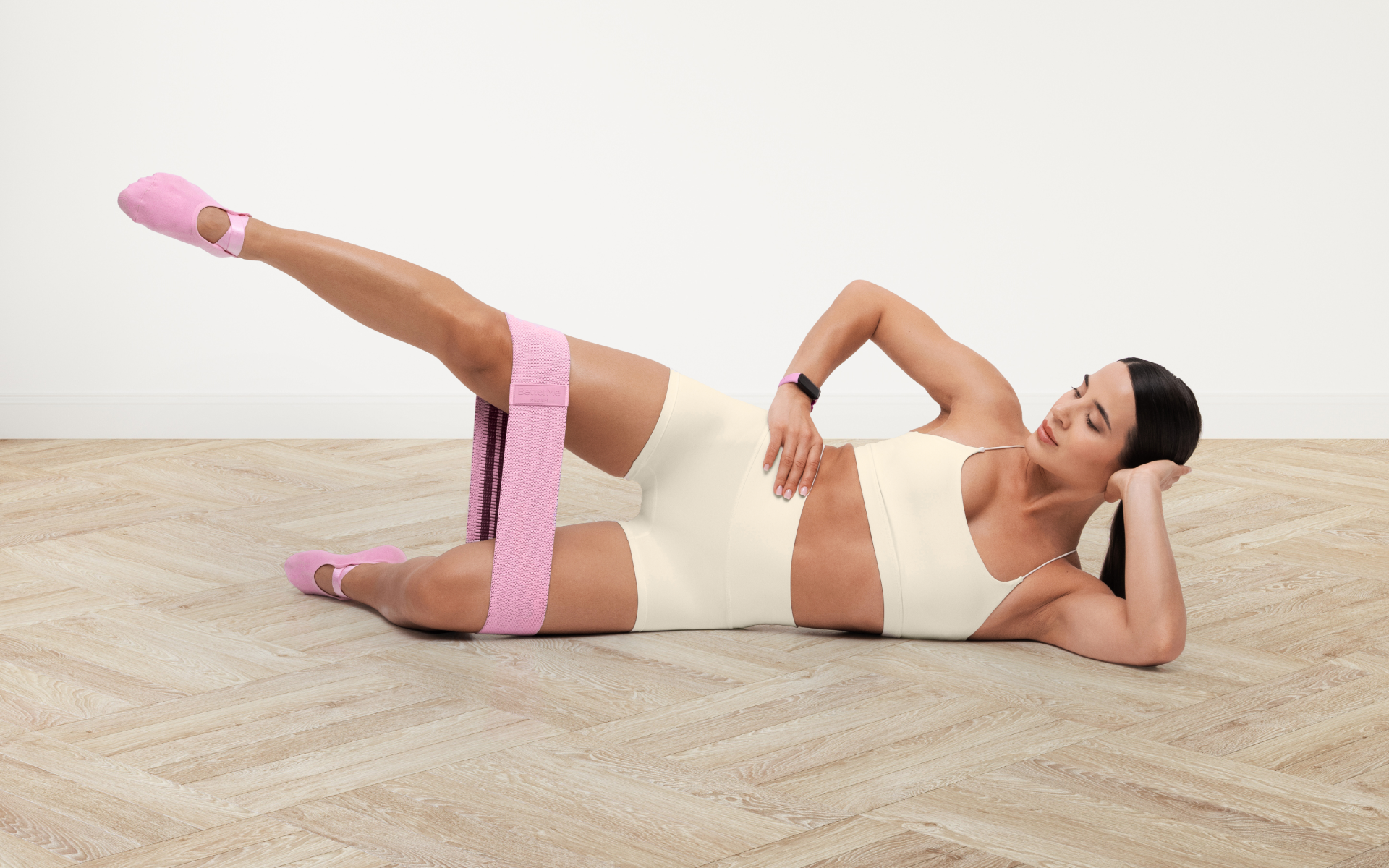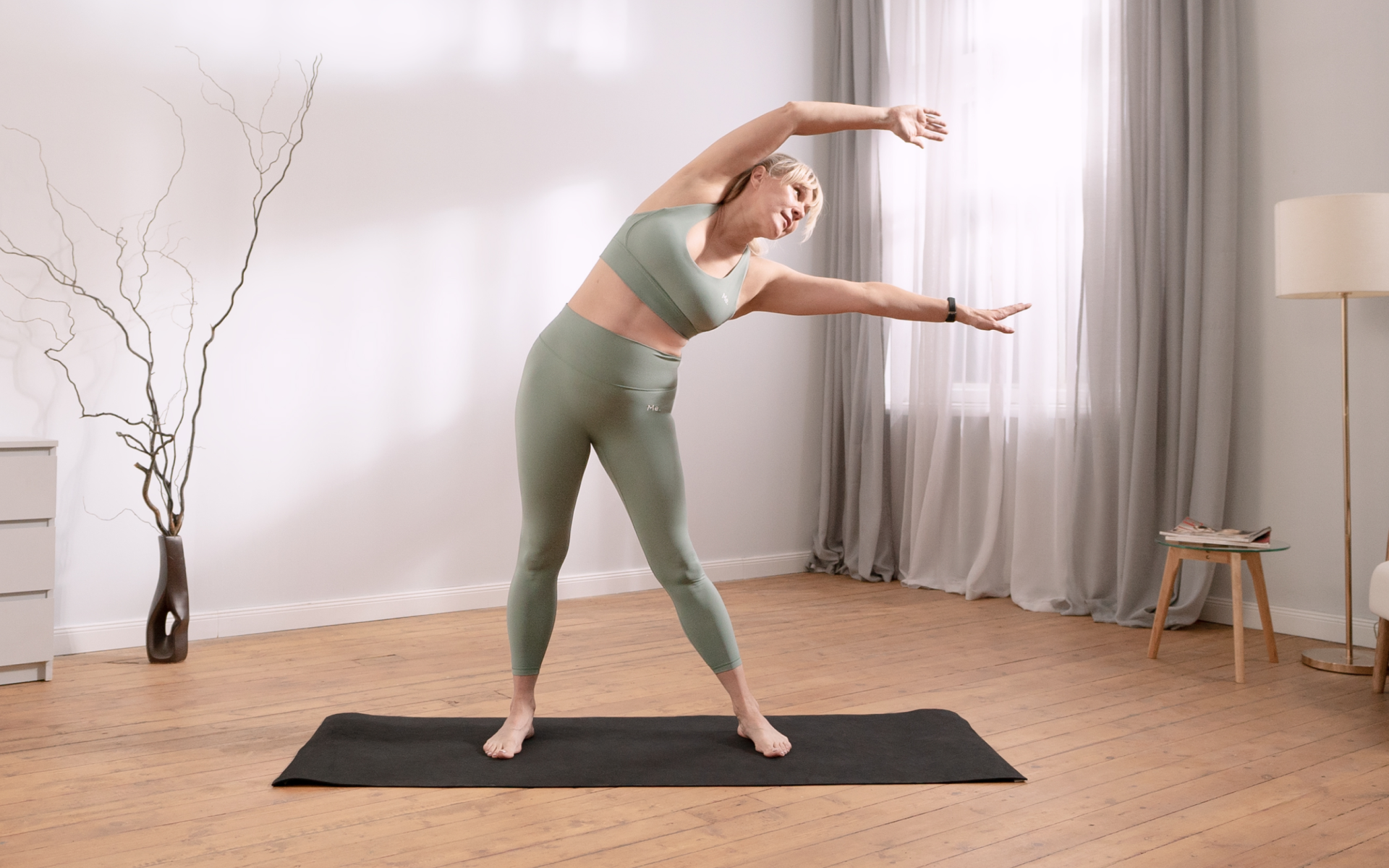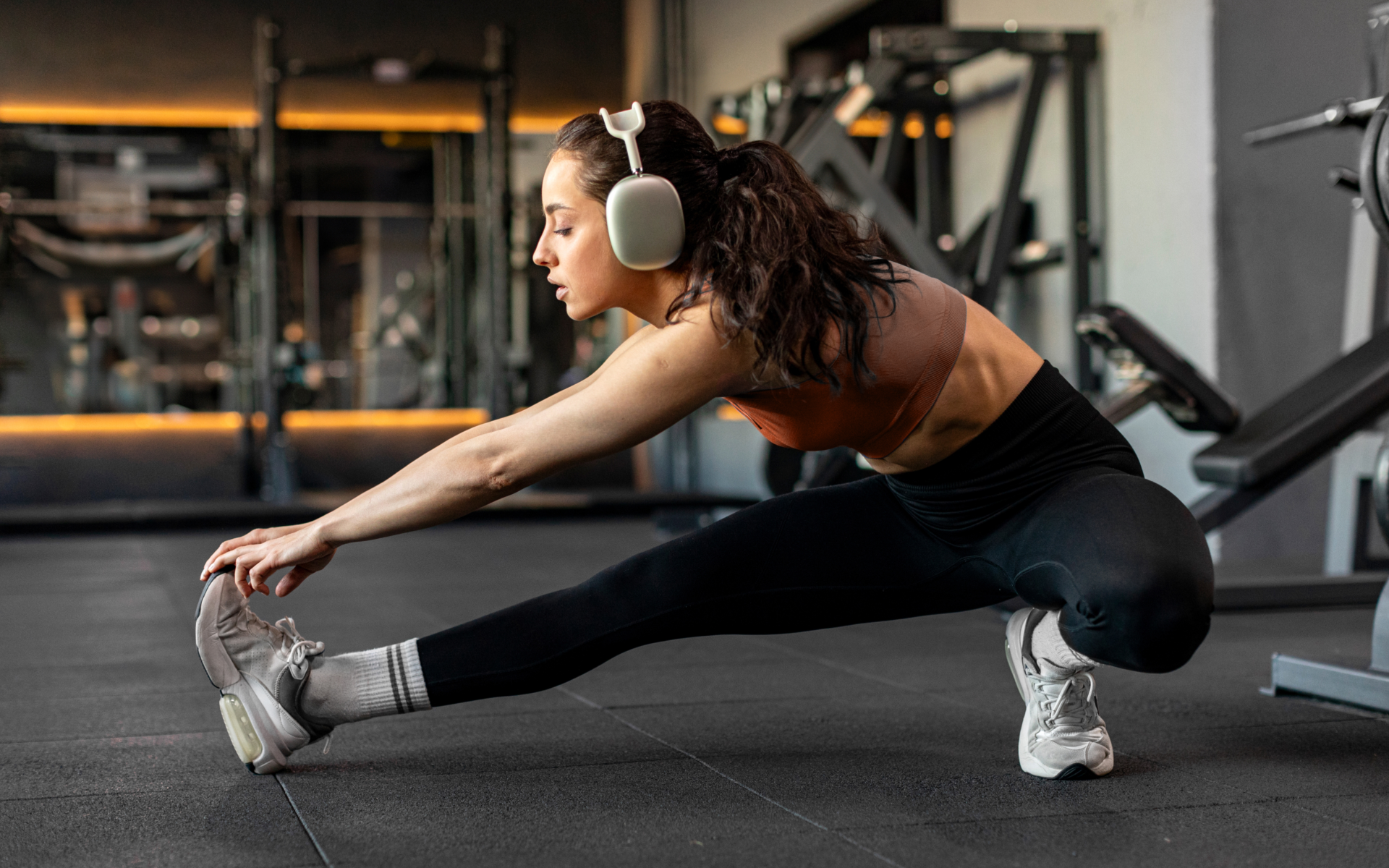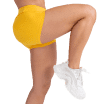Whether you’re doing leg day exercises for mass or strength, research has shown that lower-body workouts are beneficial. Not only do such workouts help tone and strengthen these muscles, they also have a significant positive impact on your brain health and nervous system (1).
These lower-body workouts can also help improve your functional fitness, posture, balance, mobility, and range of motion, in addition to strengthening your core muscles and helping with the management of back pain (2).
A good routine of effective leg day exercises can help you achieve these benefits and more. But how do you ensure that you’re scheduling your workouts for success? Read on to learn more about the best leg exercises at home or the gym, how to create an effective routine for gains, and much more.
What Is the Best Way to Plan Leg Day Exercises for Progress?
Regardless of whether you’re engaging in leg workouts at the gym or in the comfort of your home, the best way to ensure you see progress is by focusing on the following main points:
- Combine Both Compound and Isolation Exercises
Compound exercises involve multiple muscle groups at the same time. These include:
- Squats
- Lunges
- Deadlifts
On the other hand, isolation movements directly target one muscle group. These include:
- Calf raises
- Hamstring curls
- Leg extensions
By combining these two types of workouts in one session, you’ll end up having a more balanced routine and maximize your chances of success at increased muscle strength and mass.
- Perform Multiple Variations of the Same Exercise
This should be done every few weeks, depending on your training age.
- Beginners: 6-12 weeks
- Intermediate and Advanced: 4-8 weeks
Adding new variations of the same exercise to your routine helps:
- Prevent boredom by keeping things fresh and challenging.
- Prevent weight loss or even muscle plateaus by forcing your body to adapt to new challenges.
- Create better balanced muscle development. Research has shown that using variation in a structured manner can induce more full hypertrophy (3). An example of this is regular bodyweight squats that directly target the muscles in your quadriceps, hamstrings, and glutes and indirectly work the calves, core, and hip flexors. On the other hand, sumo squats target all the muscles mentioned above, but have the added benefit of directly targeting the adductor muscles, which are found in the inner thighs.
- Improve your balance, coordination, and overall skills.
Reasons why BetterMe is a safe bet: a wide range of calorie-blasting workouts, finger-licking recipes, 24/7 support, challenges that’ll keep you on your best game, and that just scratches the surface! Start using our app and watch the magic happen.
- Incorporate Progressive Overload into Your Routine
Progressive overload is a training concept that requires you to gradually challenge your body and muscles with greater demands through exercise over time. This is believed to help continuously promote muscle gains and strength.
When doing lower-body workouts, you can practice progressive overload by gradually (4):
- Increasing the weight used – This is only viable if you’re doing your leg day exercises with weights. If you’re only doing bodyweight exercises, you can skip this.
- Increasing number of repetitions per set – If you started with 3 sets of exercises with 8 reps per set, increase the number to 9 reps, then 10 reps per set.
- Increasing the number of sets per workout.
- Increasing the intensity – If you have limited equipment or weight, you can perform more challenging variations of your favorite exercises or even work out on an unstable surface.
- Reducing the rest time in between sets.
- Train Legs Twice a Week Rather Than Once a Week
The debate on how many times a week you should train muscle groups for hypertrophy (increased mass) is an ever-ongoing one. While some people believe that training more times will lead to more gains, others believe that training the same muscle group just once a week will have the same results as training it multiple times.
We suggest training your legs twice a week if you’re able to do so. This will allow you to perform quality volume to maximize growth.
Studies have shown there to be a direct relationship between volume and muscle growth – doing more work means more growth. Training your legs twice a week allows you to perform more volume with quality work (5, 6, 7).
Therefore, you should vary your routine by doing more work through increased intensity or resistance to help gain hypertrophy benefits.
- Start with the Most Demanding Exercises First
The more you exercise, the more fatigued you and your muscles will get. Starting with the most demanding exercise ensures that you won’t fail halfway through your routine and give up.
If your session combines compound and isolation workouts as suggested above, start with the compound movements and end the session with isolation movements.
- Always Start with a Warm-Up and End with Cool-Down Stretches
Warm-up and cool-down sessions are essential but often ignored parts of a workout program. According to industry and health experts, taking the time to warm up your muscles before you dive into a workout helps prepare your mind, body, and muscles for the upcoming movements. It prepares the body through several mechanisms, including:
- Increased blood flow
- Increased temperature
- Improved flexibility
These alterations to your body help reduce the risk of injury and can even make you more efficient during your workout (7, 8).
Cool-downs and stretches post-workout also provide unique benefits, including:
- Helping gradually reduce your heart rate at a safe pace.
- Slowly lowering your body temperature.
- Helping reduce lactic acid buildup in the muscles.
This can help mitigate muscle soreness and cramping – it may even prevent fainting (8, 9).
Check out our article on leg stretches to see some stretches you can use as part of your warm-up and cool-down sessions before and after exercises for legs and thighs.
Read more: 3-Day Full-Body Gym Workout for Female Beginners
How to Plan a Leg Day as a Female Beginner
All six points mentioned above can help you plan the best leg day workout routine that will have your lower body looking and feeling amazing. In addition, you should:
- Pay Close Attention to Your Form
Learning proper form for each workout will help prevent injuries. When you exercise without proper form, you’re placing excess stress on your muscles and joints through uneven force and overuse, which can lead to injury. You can learn proper form for each exercise by focusing on alignment, posture, and controlled movements, while engaging the correct muscles and breathing effectively.
Whether you’re a workout beast or just a beginner making your first foray into the world of fitness and dieting – BetterMe has a lot to offer to both newbies and experts! Install the app and experience the versatility first-hand!
- Start slowly
Start with easy basic lower-body exercises such as bodyweight squats, lunges, glute bridges, and calf raises. It can be tempting to try the more complicated moves you’ve seen online, but this isn’t the best decision, particularly for beginners.
Easy and basic movements are better as they help lay a solid foundation of strength, improve functional movement, and reduce the risk of injury.
- Be Consistent
Whether you’re doing your leg exercises once or twice a week, progress will only occur if you’re consistent and patient. Keep at it and remember that it takes up to 8 weeks to start seeing the initial results from your workout routine.
How Many Exercises Should You Do on Leg Day?
These are general guidelines for building an effective leg day routine. In most cases, the average lifter will benefit from 4-6 total exercises, not 8-10 per muscle group. This keeps weekly training volume in the recommended range of about 10-20 working sets per muscle group, while avoiding unnecessary fatigue. A balanced leg session should include a mix of compound and isolation movements, such as:
- 1-2 squat variations (e.g. back squats, hack squats, goblet squats)
- 1-2 hip-hinge variations (e.g. deadlifts, Romanian deadlifts, hip thrusts, cable pull-throughs)
- 1 unilateral movement (e.g., Bulgarian split squats, lunges, step-ups)
- 1 Calf exercise (e.g. standing calf raises, donkey press)
- Optional isolation work (e.g. leg extensions, leg curls) (10).
Different goals and training experience will shift the exact volume and exercise selection, but this structure will give most lifters a clear starting point for effective, time-efficient leg training.
Read more: The Best Exercises To Include In A 5-Day Workout Routine For Women
What Are Some Scalable Leg Day Exercises to Try?
Any lower-body workout can be scaled up through increasing the weight used, intensity of the workout (e.g. doing more difficult variations), reducing rest time between sets and reps, or performing more reps or sets per exercise.
Examples of simple leg day exercises you can easily scale up include:
- Squats
There are multiple ways to scale up traditional bodyweight squats. This can be done by increasing the difficulty and intensity of the workout.
Some bodyweight variations to use to scale up this exercise include:
- Pulse squats
- Bulgarian split squats
- Wall sit squats
- Jump squats
If you’re doing leg exercises using gym machines, you can easily scale up this workout by using machinery such as the:
- Leg press
- Hack squat machine
- Smith machine
Machines make it easier to increase the load of the exercise.
- Lunges
You can scale up bodyweight lunges by engaging in different variations, such as:
- Walking lunges
- Lunge pulses
- Reverse lunges
- Curtsy lunges
- Jump lunges
- Glute Bridges
You can scale these up by performing variations such as:
- Single-leg glute bridges
- Marching glute bridges
- Bridge pulses
You can also scale up other lower-body exercises that target similar muscle groups, such as deadlifts, step-ups, calf raises, side leg raises, donkey kicks, hamstring curls, etc.
Check out this article for leg workouts with dumbbells.
What Is the Best Leg Day Routine for a Female Beginner?
The best leg day routine that any beginner woman can do is one that follows the above-mentioned steps. To reiterate, they are as follows:
- A 10-minute warm-up
- Four to six different exercises – As a beginner, sticking to the basic exercises is the best option. For example, you can perform the following leg exercises with 3 sets of 8-12 reps:
- Bodyweight squats
- Walking lunges
- Calf raises
- Donkey kicks
- A 5-10 minute cool-down session – This can be done through light cardio exercises such as jogging or walking or static lower-body stretches for the quads, hamstrings, calves, etc.
If you have mobility issues or want to exercise your lower body while seated, this article on leg exercises while sitting can help you do just that.
Is It OK to Do Leg Day Every Day?
No, it’s not. Attempting to do this will only lead to overtraining (11) and overuse injuries (12). To prevent this, you should stick to exercising your legs once or twice a week on non-consecutive days.
This depends on various factors, such as how many exercises you’re doing, your training age, and your goals. While many people excel at training the legs twice a week, one leg day a week can definitely work if you’re using the appropriate volume and intensity. They can be if you’re a beginner or short on time. However, you should ensure that you choose two compound movements rather than isolation workouts. These exercises should use different movement patterns and target different muscles. For example, an awesome pair of leg exercises could be squats and deadlifts. It’s usually advisable to do the most difficult exercise of your workout routine first, then do the easier ones. The reasoning is that leaving difficult workouts for the end of the session could mean that you’re too fatigued to complete them. Therefore, as squats are usually the most difficult exercise for the day, you should do them first. There is no set number of squats you should be doing per day. This is because you shouldn’t be training squats daily. With that in mind, the answer will depend on the volume and loads you use. Are you doing body squats or heavy barbell back squats? Regardless, your weekly volume should still be the primary determinant. Frequently Asked Questions
Is one leg day a week enough?
Is two exercises on leg day enough?
Should you do squats first or last?
How many squats should you perform per day?
The Bottom Line
Leg day exercises are some of the easiest to do and scale up. When you’re creating your ideal routine, remember to include warm-up and cool-down sessions, start with simple exercise variations to learn good form, practice progressive overload, and ensure your diet is healthy and high in protein to support your gains.
DISCLAIMER:
This article is intended for general informational purposes only and does not serve to address individual circumstances. It is not a substitute for professional advice or help and should not be relied on for making any kind of decision-making. Any action taken as a direct or indirect result of the information in this article is entirely at your own risk and is your sole responsibility.
BetterMe, its content staff, and its medical advisors accept no responsibility for inaccuracies, errors, misstatements, inconsistencies, or omissions and specifically disclaim any liability, loss or risk, personal, professional or otherwise, which may be incurred as a consequence, directly or indirectly, of the use and/or application of any content.
You should always seek the advice of your physician or other qualified health provider with any questions you may have regarding a medical condition or your specific situation. Never disregard professional medical advice or delay seeking it because of BetterMe content. If you suspect or think you may have a medical emergency, call your doctor.
SOURCES:
- Leg exercise: critical to brain and nervous system (2020, ijip.in)
- Effectiveness of gluteal control training in chronic low back pain patients with functional leg length inequality (2024, nature.com)
- Nonuniform Response of Skeletal Muscle to Heavy Resistance Training (2000, journals.lww.com)
- Progressive overload without progressing load? The effects of load or repetition progression on muscular adaptations (2020, pmc.ncbi.nlm.nih.gov)
- Effects of Resistance Training Frequency on Measures of Muscle Hypertrophy: A Systematic Review and Meta-Analysis (2016, pubmed.ncbi.nlm.nih.gov)
- Resistance training frequency and skeletal muscle hypertrophy: A review of available evidence (2019, sciencedirect.com)
- How many times per week should a muscle be trained to maximize muscle hypertrophy? A systematic review and meta-analysis of studies examining the effects of resistance training frequency (2019, pubmed.ncbi.nlm.nih.gov)
- Warm Up, Cool Down (2024, heart.org)
- Warm up and cool down activities (2024, nhsinform.scot)
- No Time to Lift? Designing Time-Efficient Training Programs for Strength and Hypertrophy: A Narrative Review (2021, researchgate.net)
- Overtraining Syndrome A Practical Guide (2003, pmc.ncbi.nlm.nih.gov)
- Sports Injuries (2024, niams.nih.gov)

